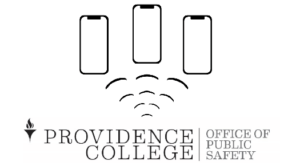by The Cowl Editor on August 29, 2019
Opinion

by Savannah Plaisted ’21
Opinion Staff
Over the course of this past summer, the United States has been reminded on various occasions that mass shootings are still a plague in American society. Bulletproof backpacks have been in high demand for the upcoming school year, and many schools are taking closer looks at their precautionary safety measures.
Students at Providence College should be asking themselves and their campus security how exactly the College is prepared to deal with the presence of a mass shooter on campus, should that event occur.
At this point, gun safety procedure as it pertains to PC’s campus is not a widely discussed or understood topic. Sadly, this lack of preparation grows more concerning as mass shootings continue across the country. How many people on PC’s campus, especially its students who live here full-time, know what to do if there is an active shooter on campus?
Ultimately, the College needs to communicate to students a developed procedure concerning what to do should there be an active shooter on campus. How will we be notified? What should we do? Where are the safest places? Who will respond to the threat?
A good way to begin sharing this information is at freshman orientation. With the beginning of each new school year comes the four-day orientation for freshmen, which is packed full of information and activities for students to partake in. This orientation, which already includes some sessions on campus safety, should also provide freshmen with safety information in the event of an active shooter.
Koren Kanadanian, chief of public safety, said in an interview in April 2019, “The Office of Public Safety is fully willing to participate in any orientation programs if invited, and has in the past and is scheduled to do so with Orientation Leaders and RAs this August.” According to Kanadanian, the busyness of the orientation schedule has made it difficult to find time to share information about certain emergency situations.
Although the Office of Public Safety did end up participating in orientation this year, students and Orientation Leaders that took part in it this August can vouch for the fact that what students should do in the case of an active shooter was not covered by the representative from the Office of Public Safety.
According to Kanadanian, campus safety and security officers undergo various trainings in unison with the Providence Police Department, as well as the trainings performed for faculty and staff. This preparedness is a step in the right direction, but what use is this knowledge if the students themselves have no access to it? In the case of a legitimate emergency, would students know whom to turn to or what to do?
To address these concerns, PC should begin incorporating more information from Safety and Security in orientation. While it is a positive that the Office participated this year, information specific to gun safety should be conveyed directly to students.
And aside from freshman orientation, PC needs to develop a plan to educate upperclassmen who have already been through orientation and have not yet received active shooter situation training.
The Sandy Hook shooting in Newtown, Connecticut, in which 26 children and teachers died, lasted only six minutes. Preparedness is key when it comes to these traumatic situations. PC needs to move faster to inform the student body of what to do in the instance of armed threats to campus. The school must also incorporate more frequent emergency drills into not only the orientation schedule, but also the remainder of the academic year.
So far this year, there have been at least 255 mass shootings in the United States. This is the largest number the US has ever seen. This epidemic is not going away.